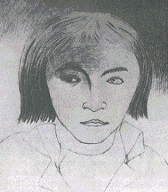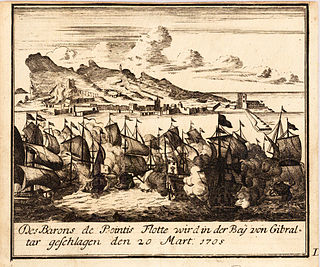 W
WCorsairs were privateers, authorized to conduct raids on shipping of a nation at war with France, on behalf of the French crown. Seized vessels and cargo were sold at auction, with the corsair captain entitled to a portion of the proceeds. Although not French Navy personnel, corsairs were considered legitimate combatants in France, provided the commanding officer of the vessel was in possession of a valid letter of marque, and the officers and crew conducted themselves according to contemporary admiralty law. By acting on behalf of the French Crown, if captured by the enemy, they could in principle claim treatment as prisoners of war, instead of being considered pirates. Because corsairs gained a swashbuckling reputation, the word "corsair" is also used generically as a more romantic or flamboyant way of referring to privateers, or even to pirates. The Barbary pirates of North Africa as well as the Ottoman Empire were sometimes called "Turkish corsairs".
 W
WLouis-Michel Aury was a French privateer operating in the Gulf of Mexico and the Caribbean during the early 19th century.
 W
WHippolyte Bouchard, or Hipólito Bouchard, was a French-born Argentine sailor and corsair who fought for Argentina, Chile, and Peru.
 W
WAlexandre Bras-de-Fer was a flibustier in the latter half of the mid-17th century. He is best known for capturing a Spanish ship after being shipwrecked, though his story is possibly apocryphal.
 W
WJacquotte Delahaye, was a pirate active in the Caribbean sea. Alongside Anne Dieu-le-Veut, she was one of very few 17th-century female pirates. There is no evidence from period sources that Delahaye was a real person. Stories of her exploits are attributed to Leon Treich, a French fiction writer of the 1940s.
 W
WJean Thomas Dulaien was a French pirate active in the Caribbean. He is known for preserved copies of his Articles and black flag.
 W
WPierre Le Grand was a French buccaneer of the 17th century. He is known to history only from one source, Alexandre Exquemelin's Buccaneers of America, and may be imaginary.
 W
WJean Lafitte was a French pirate and privateer who operated in the Gulf of Mexico in the early 19th century. He and his older brother Pierre spelled their last name Laffite, but English language documents of the time used "Lafitte". This has become the common spelling in the United States, including places named after him.
 W
WMichel le Basque was a pirate and flibustier from the Kingdom of Navarre in the southwest of France. He is best known as a companion of François L'Olonnais, with whom he sacked Maracaibo and Gibraltar.
 W
WOlivier Levasseur, was a French pirate, nicknamed La Buse or La Bouche in his early days for the speed and ruthlessness with which he always attacked his enemies as well as his ability to verbally attack his opponents. He is known for allegedly hiding one of the biggest treasures in pirate history, estimated at over £1 billion, and leaving a cryptogram behind with clues to its whereabouts.
 W
WRaveneau de Lussan was a French buccaneer.
 W
WEtienne de Montauban was a French flibustier (buccaneer), privateer, and pirate active in the Caribbean and off the west African coast. Frequently referred to as Sieur de Montauban, he wrote an account of his later voyages including surviving a shipwreck.
 W
WDaniel Montbars (1645–1707?), better known as Montbars the Exterminator, was a 17th-century French buccaneer. For several years, he was known as one of the most violent buccaneers active against the Spanish during the mid-17th century. His reputation as a fierce enemy of the Spanish Empire was matched only by l'Ollonais and Roche Braziliano.
 W
WJean-David Nau, better known as François l'Olonnais, was a French pirate active in the Caribbean during the 1660s.
 W
WBernard Desjean, Baron de Pointis was a French admiral and privateer.
 W
WJean-François de La Rocque de Roberval was a French nobleman and adventurer who, through his friendship with King Francis I, became the first Lieutenant General of New France. As a corsair he attacked towns and shipping throughout the Spanish Main, from Cuba to Colombia. He died in Paris as one of the first Huguenot martyrs.
 W
WJacques de Sores was a French pirate who attacked and burnt Havana, Cuba in 1555.
 W
WRobert Surcouf was a French privateer who operated in the Indian Ocean between 1789 and 1801, and again from 1807 to 1808, capturing over 40 prizes. He later amassed a large fortune as a ship-owner, from privateering, commerce, and illegal slave trade, and as a landowner.
 W
WJacque Alexander Tardy better known as "Tardy the Pirate", was an unsuccessful and atypical pirate who usually poisoned his victims. Most known for his last act of piracy of the brig Crawford. He wore a blue velvet frock coat, carried a cane and was small of stature with fine features and a dark complexion. At the time of his death he had grey hair and wore dentures.
 W
WMoïse Vauquelin or Moses Vanclein was a 17th-century French buccaneer. During his four-year career as a pirate, he served as an officer under l'Ollonais and formed a brief partnership with Pierre Le Picard. He and Philippe Bequel later co-wrote a book detailing their explorations of the Honduran and Yucatán coastline.
 W
WEmanuel Wynn was a French pirate of the 17th century, and is often considered the first pirate to fly the Jolly Roger.
 W
WDominique You or Youx was a privateer, soldier, and politician.